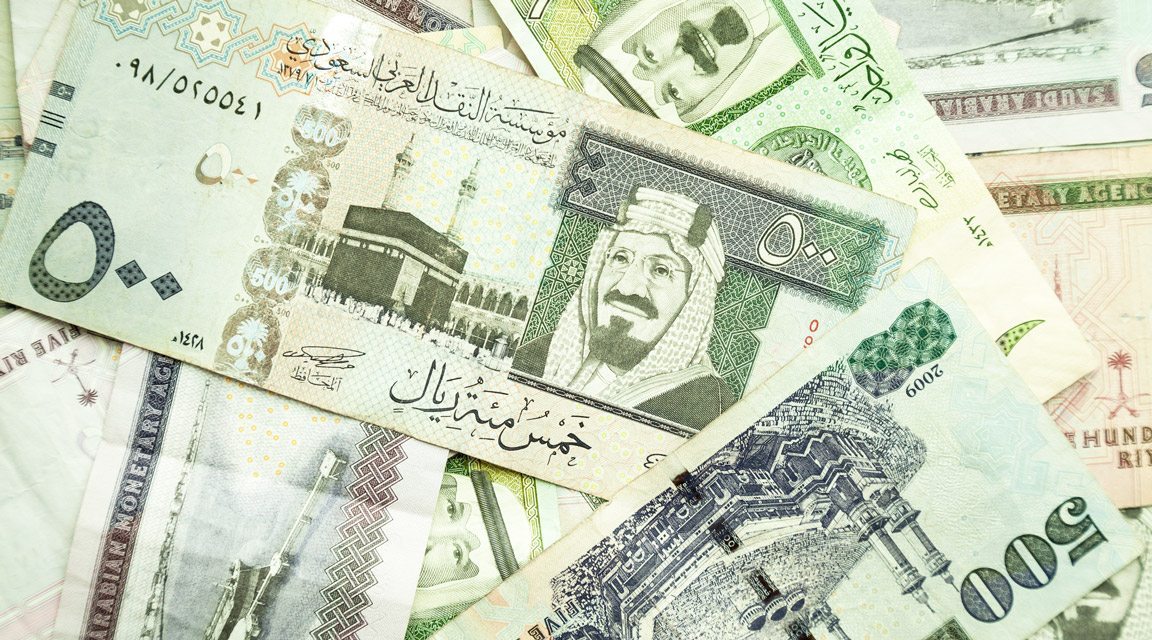

Saudi Arabia has set out its largest ever budgeted spending plan at SR1.1 trillion ($293.33bn). That figure is up 7 per cent from 2018, with military, security services, education and healthcare allocated more than than two thirds of the total.
Based on revenues of $260bn, Riyadh is budgeting for a slightly lower year-on-year deficit at just under $40bn, according to the ministry of finance.
According to the fiscal budget statement, 2018 real GDP grew at 2.3 per cent, and GDP growth is expected to reach 2.6 per cent in 2019.
The budget boosts capital spending to $65.6bn, up 20 per cent compared to $54.6bn in 2018.
“This is a clear sign that there has been a particular effort to raise the level of the growth-enhancing aspect of government expenditure in order to support development and lift the overall investment profile of the private sector,” analysts at Riyadh-based Jadwa Investment noted.
A full breakdown has not been revealed yet, but the plan includes $8.8billion for the energy, industry, mining and logistics sectors, Energy Minister Khalid al-Falih said in a tweet. This was three times more than the previous budget, he added.
The ministry of finance has forecast oil revenues for the year at $176.5bn, up 9 per cent on 2018. These account for more than 70 per cent of the government’s export revenues.
Jadwa calculates this would be based on crude oil and product exports at 9.2 million barrels a day (b/d), and average prices of around $76 a barrel for benchmark Brent crude oil.
The outlook for 2019 prices is highly uncertain, amid tepid demand growth and surging US supplies, with oil prices falling in December despite a pledge from oil producers’ group Opec to cut output to rebalance the market.
Having averaged around $70 a barrel in the fourth quarter, Brent crude fell to $56.43 a barrel on 19 December. This is well short of the $84 a barrel average oil price that analysts at Al-Rahji Capital, another Riyadh-based investment house, have forecast the kingdom will need to avoid another deficit.
At the end of 2018 the total deficit reached $36.3bn - or 4.7 per cent of GDP.
Opec and its allies, led by Russia, agreed on 7 December to cut output by 1.2 million b/d during the first six months of 2019.
Non-oil revenues are forecast to reach $83.5bn in 2019, which would mean a growth of 9 per cent over 2018’s actual total of $76.5bn.
However, the rise in non-oil revenues will mostly come from increased fees levied on expatriate workers, and a reduction in the threshold for VAT, boosting the number of businesses eligible to pay the tax.
With lower oil export revenues and delays to the part-privatisation of state oil giant, Saudi Aramco, Riyadh has turned to the bond market to fund investments.
This means the government will have to raise its financing by around $31.5bn over the year, taking the kingdom’s total debts to $180bn, or roughly 20 per cent of its GDP, according to calculations by Jadwa.
This is compared to $149.3bn of debt at the end of 2018 - but the ministry of finance also says it expects the deficit to shrink to zero by 2023.
The initial public offering of 5 per cent of Aramco was aimed at generating $100bn for the kingdom’s sovereign wealth fund to boost spending, reinvigorate the Saudi economy, and wean it off its reliance on oil revenues.
The IMF’s August 2018 report on its Article IV consultation affirmed the kingdom's progress to be largely in line with Riyadh's objective of achieving fiscal balance by 2023.
You might also like...

Iraq signs deal to develop the Akkas gas field
25 April 2024

Emaar appoints beachfront project contractor
25 April 2024

Acwa Power signs $356m Barka extension
25 April 2024

AD Ports secures Angola port concession agreement
25 April 2024
A MEED Subscription...
Subscribe or upgrade your current MEED.com package to support your strategic planning with the MENA region’s best source of business information. Proceed to our online shop below to find out more about the features in each package.




